Comparison and Analysis of Long and Short Processes in Iron and Steel Industry
There are three processes in the production of iron and steel industry: blast furnace-converter process, electric arc furnace process, and special smelting. The blast furnace-converter process is also called the long process. The steel produced is called converter steel. It is molten iron with iron ore and coke as the main raw materials and then converter steel. The electric arc furnace process is called a short process, and the steel produced is called electric furnace steel, which is made from scrap steel as the main raw material.
Comparative Analysis of Process Technology
The converter process and electric arc furnace process are two main production processes in the iron and steel metallurgy industry. The main differences in steelmaking are as follows:
1) Main steel materials used are different. Converter steelmaking mainly uses molten iron as raw material and about 15% scrap steel. In recent years, the low price of scrap steel and high profit per ton of steel provides conditions for a high proportion of scrap steel used in converter steelmaking. The proportion of scrap steel consumption has been greatly increased, even up to 40%. However, there is insufficient heat in the converter. Solving the heat problem in the converter is the key to improving the scrap steel ratio. Electric arc furnace steelmaking is mainly based on scrap steel as raw material, and scrap steel substitutes such as hot metal (pig iron), direct reduction iron, decarburized granular iron, iron carbide, and composite metal material.
2) Main energy sources are different. Converter steelmaking is mainly physical and chemical heat of molten iron. Electric arc steelmaking is mainly physical heat of electric arc, physical and chemical heat of raw material, auxiliary chemical heat, and residual energy of recovered flue gas. Auxiliary chemical heat mainly refers to oxygen jet carbon powder and gas burner. The residual energy of flue gas includes physical heat and chemical heat of flue gas.
3) Main operating objectives are different. Converter steelmaking is a metallurgical operation to complete decarburization, dephosphorization, and temperature control within a given time, achieving hit of composition (carbon, phosphorus) and temperature; Electric arc furnace steelmaking is to complete heating, melting, and overheating of scrap steel in a given time under the condition of all scrap steel. In the case of adding hot metal and other scrap steel substitutes, there is also a requirement for partial decarburization. In addition, EAF steelmaking can control the composition and temperature separately.
4) The process development direction is different. Converter steelmaking mainly achieves a high efficiency of converter production through measures such as high-efficiency blowing technology to improve oxygen supply intensity, fully automatic blowing technology for carbon and temperature hitting rate, fast tapping technology for non-inverting tapping, off-furnace treatment, and hot metal pretreatment to relieve the metallurgical load of the converter, realizing cleanliness of products through close balance smelting process, high-efficiency dephosphorization process and slag retaining technology for steel tapping. Low-cost and negative-energy steelmaking can be realized by slag reduction and slag return, alloy element melting reduction (Cr, Mn) ore, water reduction for dry dedusting, residual heat recovery from gas, etc. Electric arc furnace steelmaking is mainly based on the enhanced energy supply (including enhanced power supply and auxiliary energy), environmentally friendly scrap steel preheating system, preheating scrap steel and water process, and increasing physical and chemical heat. Continuous smelting technology that can still be electrified without furnace cover and when steel tapping is adopted to effectively reduce non-energizing time, and flat-bath smelting technology with a large amount of steel retained about 50% or higher, so as to reduce the damage of arc radiation to refractory materials and reduce electrode consumption during the smelting process. The application of the above technology shortens the smelting cycle, realizes high-efficiency production of steel-making, and reduces energy consumption per ton of steel.
5) Differences in metallurgical quality. Residual elements in steel (Cu, Ni, Mo, As, Sb, Bi, Sn) are different. The content of residual elements in steel is high due to the repeated recycling of waste steel in electric arc furnaces. Nitrogen content in steel is different. High nitrogen content in steel is caused by air ionization in the arc zone and high nitrogen content in raw material. Although the electric arc furnace operates in a large amount of flat molten pool and is sealed for smelting, which is conducive to reducing nitrogen content, it is still unable to compare with the capacity of converter steelmaking to carry nitrogen removal by CO bubbles.
Comparison and Analysis of Steel-making Costs for Long and Short Processes
2.1 Cost Analysis of Steelmaking Process
For bar and wire smelting, the cost components of the LF process of the converter, electric arc furnace, and electric arc furnace (30% molten iron) include two parts, i.e. different cost items and the same cost items.
The different costs of different steelmaking processes are mainly manifested in the consumption of iron and steel material, electric energy of electric arc furnace, electrodes, refractories, lime, and other auxiliary materials, gas, cooling water, and energy recovery, especially consumption of iron and steel material, electric energy of electric arc furnace and electrodes. The differential cost of the LF process for converter, LF process for electric arc furnace, and LF process for electric arc furnace (30% molten iron) is 226.96 yuan/t, 3049.84 yuan/t, and 2819.30 yuan/t respectively.
The same cost for different steelmaking processes is 346.77 yuan/t, including alloy consumption, LF refining costs (power consumption, auxiliaries, ladle refractories, cooling water, fuel vapor), continuous casting costs, wages and benefits of personnel, manufacturing costs (depreciation, maintenance, freight and other) and spare parts.
Based on the above analysis, under the condition that the scrap steel price is 2400 yuan/t and the hot metal price is 1948 yuan/t, the steelmaking costs of three processes (converter LF, electric arc furnace LF and electric arc furnace LF (30% hot metal) are 2563.73 yuan/t, 3396.61 yuan/t, and 3166.07 yuan/t respectively.
Compared with the total cost of converter steelmaking, the total cost of electric arc furnace steelmaking increased by 832.88 yuan/t and 602.34 yuan/t respectively under the condition of total waste steel and 30% molten iron.
Compared with the total cost of converter steelmaking, under the condition of total scrap steel and 30% molten iron, the cost of steel material accounted for 54.58% and 50.72% of the total cost increase respectively. The electric consumption of electric arc furnace smelting accounts for 25.93% and 27.44% of the total cost increase respectively. Electrode consumption accounted for 17.17% and 16.44% of the total cost increase respectively, with other expenses remaining. The cost increase is mainly steel material cost and smelting power consumption cost, followed by electrode consumption cost. Steel scrap price plays a leading role in steel material cost. Under the condition that power consumption and electrode consumption are basically unchanged, electricity price and electrode price are the main factors affecting cost increase. Therefore, to reduce the cost of electric arc furnace steelmaking, we should mainly control the cost of scrap steel (yield and unit price matching), power consumption, and electrode price.
2.2 Effect of Scrap Steel Price on Steelmaking Cost of Different Processes
The influence of scrap steel price on the steelmaking cost of three different smelting processes is studied under the condition that other indexes and prices remain unchanged. The total cost of steelmaking in different smelting processes is subtracted from the cost of scrap steel, and the price of scrap steel is set as variable x to calculate the relationship between the cost of steelmaking and the price of scrap steel:
1) When the price of scrap steel is lower than 1373.73 yuan/t, the cost of LF process steelmaking of electric arc furnace (all scrap steel) is lower than that of LF process steelmaking of converter, and that of LF process steelmaking of electric arc furnace (30% molten iron) is lower.
2) When the scrap price is 1373.73-1494.95 yuan/t, the LF process of electric arc furnace (mixed with 30% hot metal) has a low cost of steelmaking, and the LF process of electric arc furnace (all scrap steel) has a slightly higher cost of steelmaking than that of converter LF process.
3) When the scrap price is more than 1494.95 yuan/t, the cost of converter LF process steelmaking is lower;
4) When the price of scrap steel is more than 1707.07 yuan/t, the LF process of electric arc furnace (30% hot metal) has a low cost of steelmaking. When the scrap price is lower than 1707.07 yuan/t, the LF process of electric arc furnace (all scrap steel) has a low cost of steelmaking, which means adding hot metal is not conducive to the reduction of steelmaking cost. Therefore, the lowest cost of the steelmaking process is mainly dependent on the scrap price.
2.3 Effect of Electricity Charge Price on Steelmaking Costs of Different Processes
When the price of scrap steel is 100,200,300,400,500,600 yuan/t lower than that of molten iron, the cost of smelting the whole scrap steel and 30% molten iron is the same as that of the converter steelmaking process. The electricity price used in the electric arc furnace is shown in Table 3. It can be seen from Table 3 that when the price of scrap steel is higher than 1648.00 yuan/t, the cost of electric arc furnace steelmaking must exceed that of converter steelmaking. When the scrap price is 1548.00 yuan/t and the electricity price is 0.44 yuan/kWh, the cost of all scrap electric arc furnace steelmaking is equal to that of converter steelmaking. The electricity price is 0.23 yuan/kWh, which is equivalent to the cost of converter steelmaking with a 30% ferroelectric arc furnace. If the scrap price is further reduced and the corresponding electric price can be slightly higher, the cost of converter steel and electric arc furnace steel can be guaranteed to be equal.
On the premise that the price of scrap steel equals the price of molten iron, i.e. when the price of scrap steel is 1948 yuan/t, the cost of electric arc furnace steelmaking is higher than that of converter steelmaking. From the total cost of steelmaking in different smelting processes in Table 1 and Table 2, subtract the cost of electricity consumption in each process, and then set the electric price as variable x. When the price of scrap steel is 500 yuan/t lower than that of hot metal, i.e. the price of scrap steel is 1448 yuan/t, the relationship between steel-making cost and the electric price is calculated (Figure 3). It can be seen from Figure 3 that when the price of electricity is higher than 0.68 yuan/kWh, the steel-making cost of the converter LF process is the lowest. Electric arc furnace (30% hot metal) LF process has the highest steelmaking cost. When the electricity price is reduced to 0.68 yuan/kWh and higher than 0.43 yuan/kWh, the LF process of electric arc furnace (scrap steel) has the lowest steelmaking cost, followed by converter LF, while the LF process of electric arc furnace (30% molten iron) still has the highest steelmaking cost. When the electricity price is lower than 0.43 yuan/kWh, the LF process of the converter has the highest steelmaking cost, followed by the LF process of electric arc furnace (30% hot metal) with the lowest steelmaking cost, and the LF process of electric arc furnace (all scrap steel) with the lowest steelmaking cost.
2.4 Effect of Electrode Price on Steelmaking Cost
Compared with the total cost of converter steelmaking, the total cost of electric arc furnace steelmaking (scrap steel, 30% hot metal for electric arc furnace) increased by 832.88 yuan/t and 602.34 yuan/t respectively. Based on the data in Table 1 and Table 2, the relationship between the total cost increase of EAF steelmaking (compared with converter steelmaking) and the electrode price is analyzed. For all scrap steel of electric arc furnace and 30% molten iron smelting cost increases by 13.00 yuan/t and 9 yuan/t respectively for every 10,000 yuan increase in electrode price.
Comparison and Analysis of Energy Consumption in Long-Process and Short-Process Steelmaking
The difference between the energy consumption of the long blast furnace-converter process and that of the short process is clarified.
1) Energy consumption of short process steelmaking in an electric furnace.
Under different conditions, the energy consumption of EAF short process steelmaking decreases significantly with the increase of hot charging molten iron ratio. Under the same conditions, the electric arc furnace without preheating and steam recovery have high energy consumption, followed by the waste steel reheating furnace and the lowest steam recovery process.
Using 15% pig iron with 85% waste steel and without preheating and steam recovery, the maximum energy consumption of the electric arc furnace smelting process is 90 kgce/t. The minimum energy consumption of the electric arc furnace smelting process with 50% hot iron and no preheating and steam recovery is 41 kgce/t.
2) Energy consumption of long blast furnace-converter process steelmaking.
Only consider the energy consumption of the blast furnace process is 390.63 (kgce/t).
For a 100t converter, the maximum energy consumption of the extraction process is -23.9 kgce/t.
The maximum energy consumption of the electric furnace procedure is 90 kgce/t.
Therefore, the energy consumption of long blast furnace-converter process steelmaking is much higher than that of short process steelmaking.
The main products of Hani Tech are: electric arc furnace, LF ladle refining furnace, electro slag furnace, submerged arc furnace, metallurgical electric furnace short network system, submerged arc furnace short network system, water-cooled cable, bare copper stranded wire air-cooled cable, rotatable water-cooled cable , high-current copper tube busbar, insulated copper tube busbar, copper-steel composite conductive cross arm, water-cooled compensator, water-cooled furnace cover, water-cooled furnace shell, water-cooled furnace wall, fully enclosed combined handle, direct-cooled forged copper tile, electrode Chuck, electrode holding ring, pressure ring, hydraulic brake, collector ring, conductive element, ladle, tundish, ladle car, cross flat car, steel pouring car, furnace door water-cooled carbon-oxygen gun, furnace wall speed oxygen collector Electric furnace accessories such as guns, ladles, scrap steel tanks, ladle roasters, ladle gantry hooks, water-cooled cable jacket hoses, jacket protection rings and insulating materials.
Free send inquiries to stella@hanrm.com or inquiry99@hanmetallurgy.com if any needs.
Email: stella@hanrm.com Or stellarollingmill@gmail.com inquiry99@hanmetallurgy.com
Whatsapp/Wechat:+8615877652925
Website: https://www.hanmetallurgy.com/
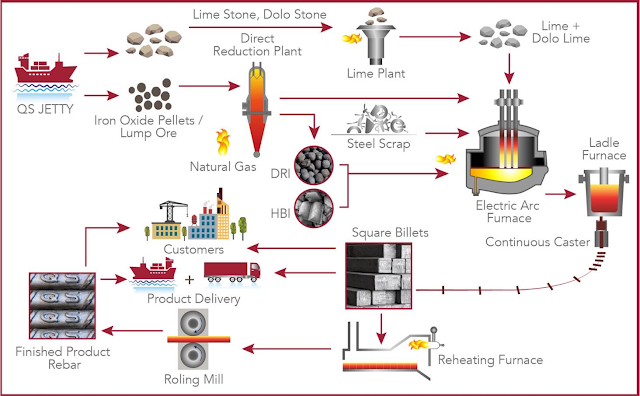
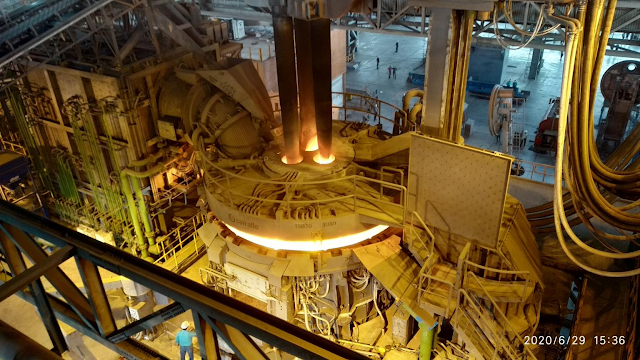
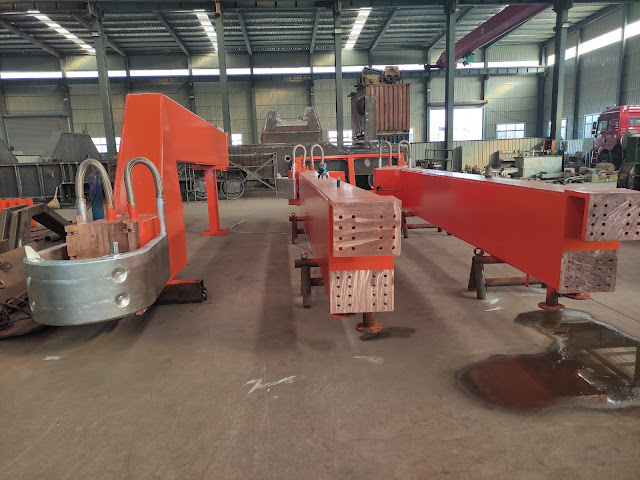


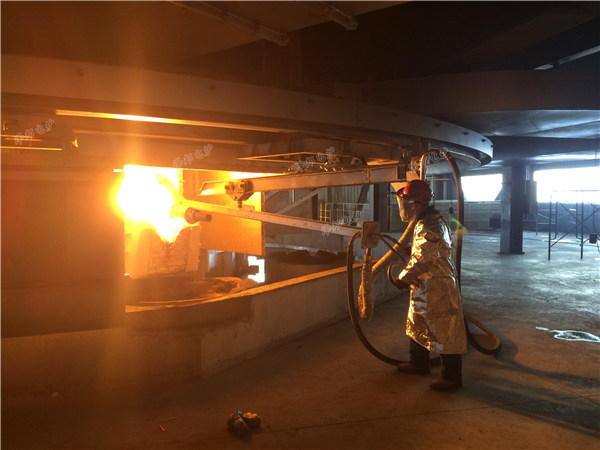
.jpg)



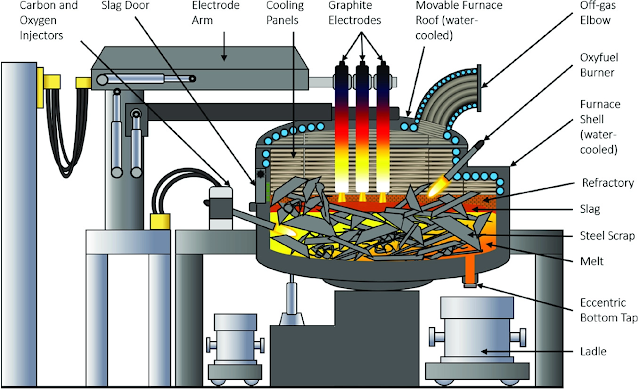

.jpg)







